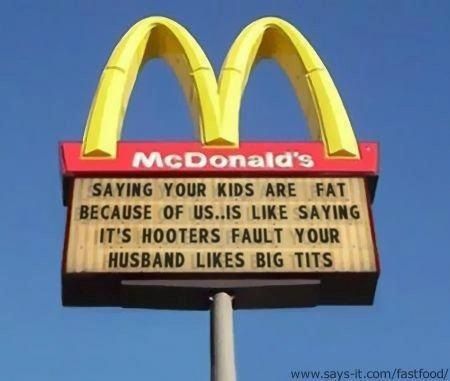Tag: Fast Food
12-Year Old McDonald’s Hamburger

The McDonald’s hamburger on the right is from 2008; the one on the left is from 1996. And they both look fairly edible.
Wellness educator and nutrition consultant Karen Hanrahan has kept a McDonald’s hamburger since 1996 to illustrate its nonexistent ability to decay. Aside from drying out and bit and having “the oddest smell,” it apparently hasn’t changed much in the past 12 years.
This isn’t the first time someone kept an uneaten McDonald’s hamburger for an extended period of time for the sake of science. Or in the case of the Bionic Burger Museum, multiple burgers for over 19 years. There are even instructions on how to start your own collection of old, self-preserving burgers. Thanks to Maria Collier, who heard it on NPR
via 12-Year Old McDonald’s Hamburger, Still Looking Good | A Hamburger Today.
How The French Fry Came To India
INDIA is the third-biggest producer of potatoes in the world. The humble spud finds itself stuffed into flatbread, encrusted in cumin seeds or tucked into pancakes. But the truckloads of large, oblong potatoes that arrive at the McCain Foods plant in the Mehsana district of Gujarat face a more exacting ordeal. Ferried by a conveyor belt and propelled by water, they are sized, steam-peeled, sliced, diced, blanched, dried, fried (for precisely 42 seconds in vegetable oil at 199ºC), chilled, frozen, bagged and then boxed.
The 15kg boxes of fries that emerge at the other end of this pipeline supply the growing chain of McDonald’s restaurants in India. When McDonald’s first entered India in 1996, the food-processing industry was confined largely to ice cream and ketchup. Even importing frozen fries was complicated by the fact that such an exotic item did not appear on India’s schedule of tariffs and quotas. It took McDonald’s roughly six years and $100m to weld a reliable supply chain together.
Chef Of The Mac
 Coudreaut, or Chef Dan as he’s called within McDonald’s, has navigated pretty well within his straits. Since hired on in 2004, he has led the creation of the Snack Wrap, the latest iterations of McDonald’s chicken-topped salad entree, the Fruit and Walnut Salad, McCafé espresso-based coffees, and, most recently, the 1/3-lb. Angus burger. (He has blown it, too. McDonald’s dropped the too-adventurous Hot ‘n’ Spicy McChicken sandwich in 2007 after just six months on the market and disappointing sales.)
Coudreaut, or Chef Dan as he’s called within McDonald’s, has navigated pretty well within his straits. Since hired on in 2004, he has led the creation of the Snack Wrap, the latest iterations of McDonald’s chicken-topped salad entree, the Fruit and Walnut Salad, McCafé espresso-based coffees, and, most recently, the 1/3-lb. Angus burger. (He has blown it, too. McDonald’s dropped the too-adventurous Hot ‘n’ Spicy McChicken sandwich in 2007 after just six months on the market and disappointing sales.)
The stream of new products is paying off. While restaurant sales have been sinking industrywide since the recession hit in 2007, McDonald’s quarterly same-store sales have continued to climb. The string, which began in 2003, continues into the third quarter, with a 1.7% increase in the U.S. in August and 2.6% in July. CEO James A. Skinner credited the gains to premium coffees and the Angus burger.
via The Challenges for McDonald’s Top Chef – BusinessWeek. Continue reading “Chef Of The Mac”

